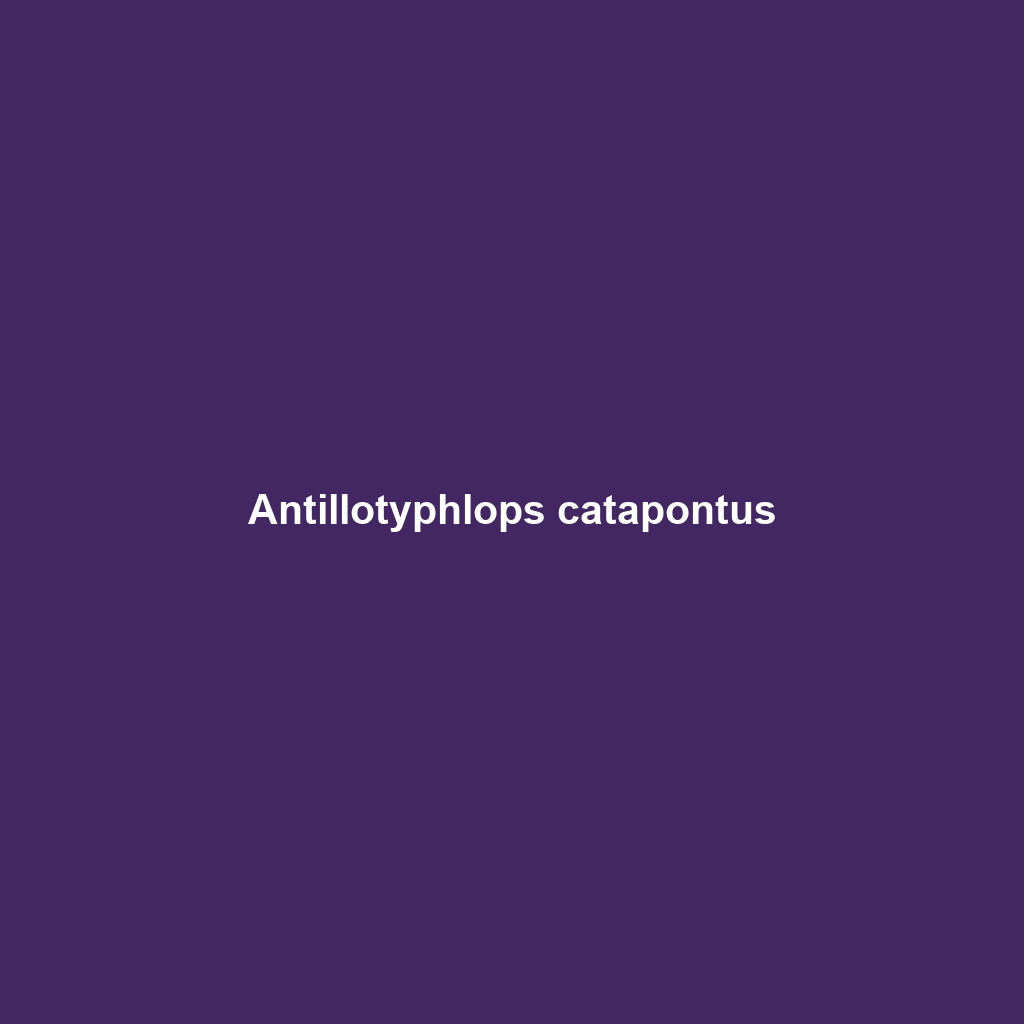Antillotyphlops catapontus: A Comprehensive Species Description
Common Name: Antillotyphlops catapontus
Scientific Name: Antillotyphlops catapontus
Habitat
Antillotyphlops catapontus, commonly known as the Antiguan blind snake, primarily inhabits the tropical regions of the Caribbean, particularly the island of Antigua. This species prefers habitats such as dry forests, grasslands, and sandy or loose soil environments, where it can easily burrow and navigate underground. Its adaptability to both forested and more arid habitats makes it a resilient species, although it is predominantly found in areas with well-drained soils that provide optimal conditions for its lifestyle.
Physical Characteristics
The Antillotyphlops catapontus exhibits unique physical characteristics that make it stand out among other snake species. Typically, it measures about 25 to 35 centimeters in length, making it a relatively small snake. Its coloration ranges from light brown to yellowish-tan, often with a slight iridescent sheen. The cylindrical body shape is smooth and lacks the distinct scales commonly found in other snakes, which enhances its ability to burrow. Notably, this species has very tiny eyes, which are often covered by scales, further emphasizing its adaptation to a subterranean lifestyle.
Behavior
Antillotyphlops catapontus is primarily a fossorial species, meaning it spends most of its life underground. It is known to be nocturnal, emerging at night to hunt or seek mates. This snake has a slow, deliberate movement style, utilizing its specialized body shape to navigate through the soil. Although largely solitary, it can sometimes be found in small groups, particularly during the breeding season. Its limited vision has led to a strong reliance on other senses, particularly smell, to locate prey and navigate the environment.
Diet
The diet of Antillotyphlops catapontus predominantly consists of small invertebrates, particularly ants and termites. This snake plays a crucial role in controlling the population of these insects in its ecosystem. It uses its keen sense of smell and touch to locate its prey within the soil. As a non-venomous snake, it relies on its ability to sneak up on unsuspecting prey and consume them whole. This diet positions it as an important predator within its habitat, highlighting its specialized feeding habits.
Reproduction
Reproductive behaviors in Antillotyphlops catapontus occur during the warmer months of the year, typically from late spring to summer. Females lay a clutch of 2 to 6 eggs, which are often deposited in sandy soil or rotting vegetation. After hatching, the young snakes are independent and receive no parental care. Their reproductive strategy, involving laying fewer eggs, contributes to their survival, as the majority of hatchlings are small enough to escape many predators.
Conservation Status
Currently, Antillotyphlops catapontus is classified as a species of “Least Concern” by the IUCN Red List. However, habitat loss due to urban development and agriculture poses potential threats to its populations. Continuous monitoring of its status is essential, as changes in land use could impact its natural habitat and long-term survival.
Interesting Facts
1. Antillotyphlops catapontus is commonly referred to as a “blind snake,” a name derived from its small, non-functional eyes.
2. This species is one of the few representing its family in the Caribbean, showcasing a remarkable example of niche adaptation in reptiles.
3. The Antiguan blind snake is often mistaken for a worm due to its small size and cylindrical shape, leading to fascination and curiosity among local residents.
Role in Ecosystem
Antillotyphlops catapontus plays a vital role in its ecosystem as a predator of ants and termites. By controlling pest populations, it helps maintain ecological balance within its habitat. Additionally, its burrowing activities contribute to soil aeration, promoting healthier plant growth and overall biodiversity. The interactions it has with other species, both as predator and prey, underscore its importance in the food web of the ecosystems where it resides.
